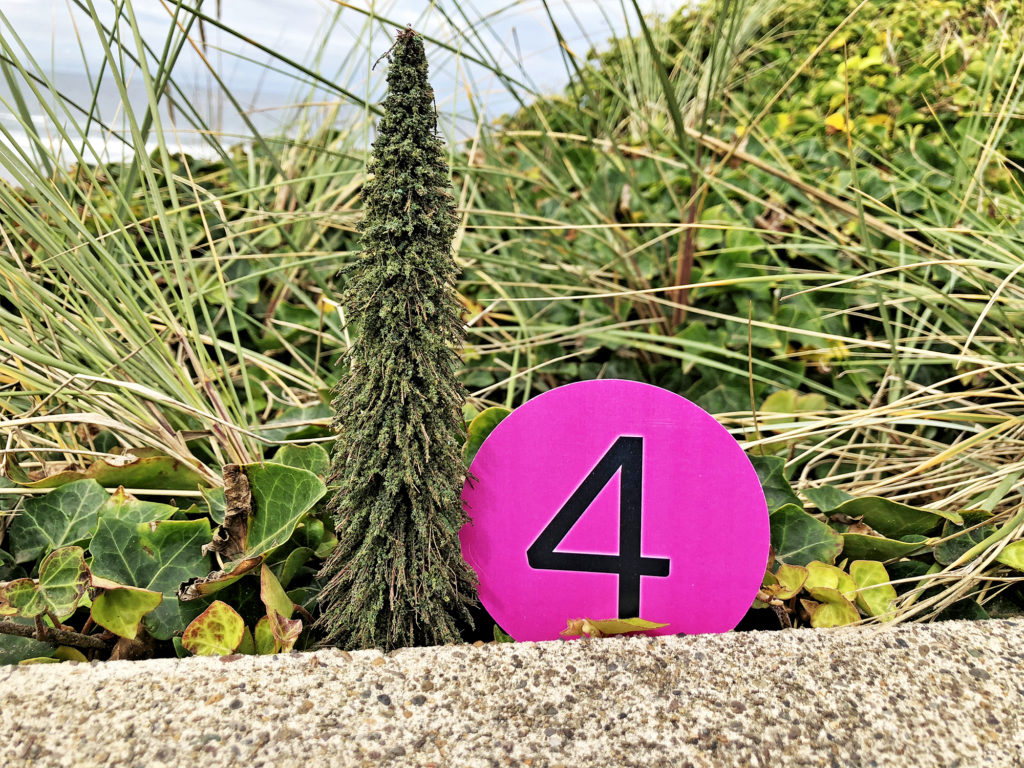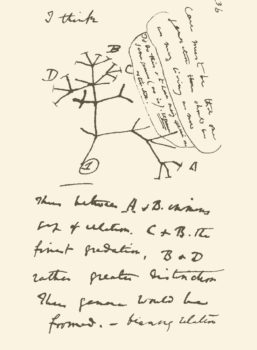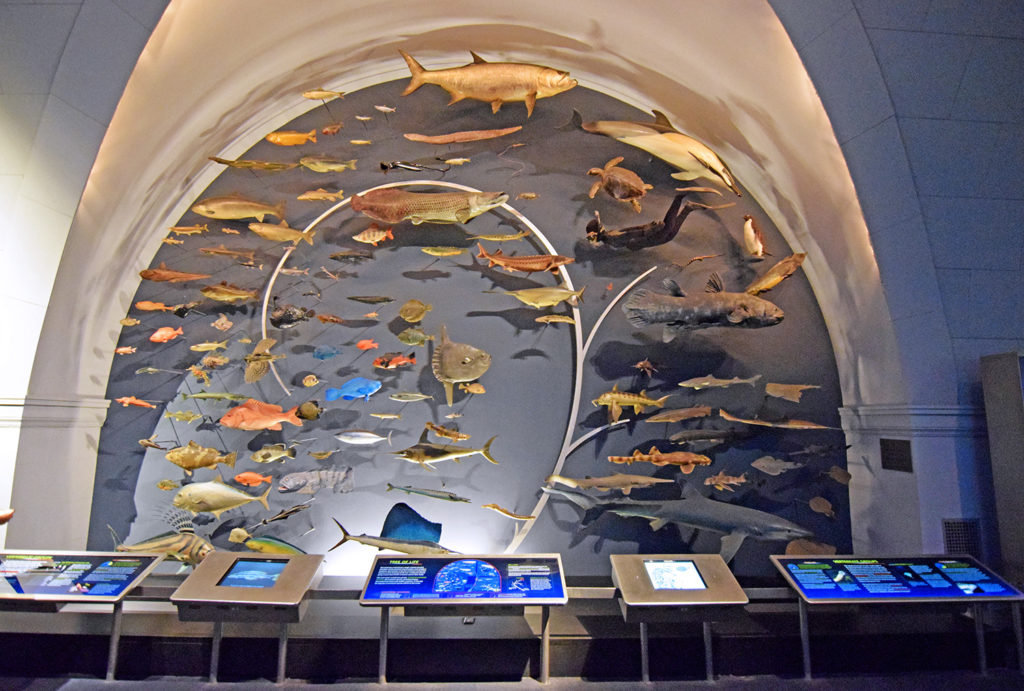
Tree of Life
Tree of Life
Trees have been used for centuries to indicate the origins and relationships between species.
Learning Objective: Read a phylogenetic tree to determine the relatedness of different species.


You can find this image on T-shirts, posters, and even as tattoos. Darwin sketched it into his notebook with the words “I think” after the voyage aboard H.M.S. Beagle.
The sketch is a version of the tree of life, in this sections we’ll see why this visual metaphor is used and what it means.
A vertebrate (species with backbones) tree of life model in the American Museum of Natural History, New York City.
Many natural history museums have a version of the tree of life leading into their collection galleries.

Watch this video; you can select the closed captioning “cc” option if you would like to see the text.
In the past structural characteristics like leg bones and feathers were used to place animals on branches of phylogenetic trees, now with new technologies, similarities and differences in genetic structure (DNA) are used as well. We’ll have more on the genetic analysis and phylogenetic tree of animals in an upcoming guide.
Does the structure of an evolutionary “phylogenetic” tree make sense to you?
If you feel you would like a bit more clarification on this tree model, we have another video on this guide’s resource page
In the next section we’ll focus on one branch of the tree of life: the animals.











